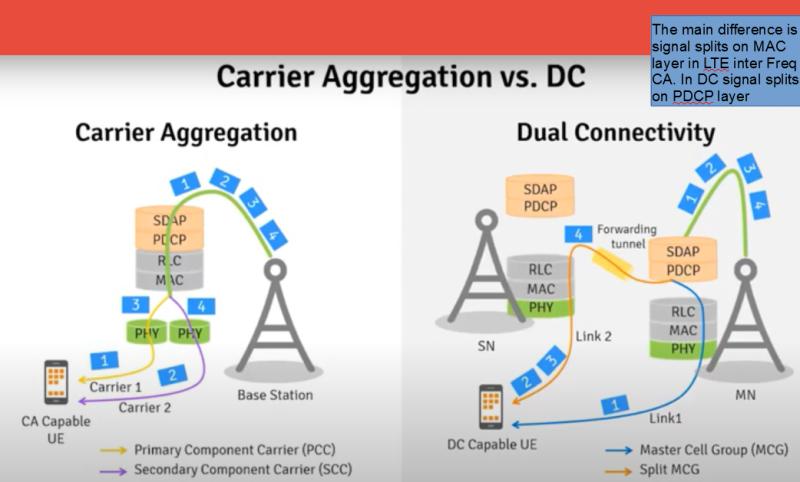The differences between CA and DC are as follows:
- In CA all component carriers belong to the same eNodeB, but in DC, the aggregated carriers belong to different cells (where usually one cell is macro and the other is small). That’s why it is sometimes also referred to as inter-site carrier aggregation. The two eNodeBs are referred to as Master Cell Group (MCG) and Secondary Cell Group (SCG). Commonly it’s clear in case of EN DC option 3x
- In CA, only one UE identity is used in all component carriers. But in DC, UE is identified by different C-RNTIs in MCG and SCG.
- Only one PUCCH is used for uplink signaling messages across all component carriers in CA, and it is present in the Primary Component Carrier. In DC, however, separate PUCCHs are used in MCG and SCG.
So, based on the differences we’ve seen so far between CA and DC, we can figure out in which scenario, which aggregation technology would be used.
If the backhaul of the network is ideal between the nodes, then CA can be implemented. But if the backhaul is not ideal, for example, if there are large delays between the nodes, then the choice should be DC.
